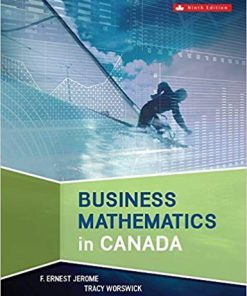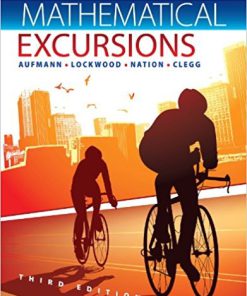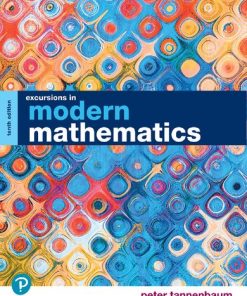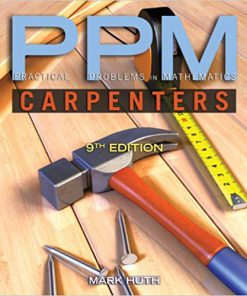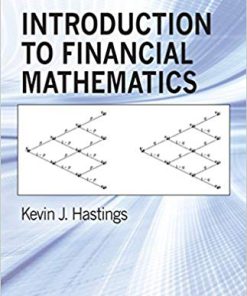(eBook PDF) Excursions in Modern Mathematics 9th Edition
$50.00 Original price was: $50.00.$35.00Current price is: $35.00.
(eBook PDF) Excursions in Modern Mathematics 9th Edition – Instant Download
(eBook PDF) Excursions in Modern Mathematics 9th Edition – Digital Ebook – Instant Delivery Download

product details:
- ISBN-10 : 0134468376
- ISBN-13 : 978-0134468372
- Author: Peter Tannenbaum
For courses in Liberal Arts Mathematics.
Math: Applicable, Accessible, Modern
Excursions in Modern Mathematics introduces readers to the power and beauty of math. By developing an appreciation for the aesthetics and applicability of mathematics, readers who previously felt math was an “unknowable” subject can approach it with a new perspective. Contemporary topics ranging from elections, to networks, to analyzing data show readers that math is an accessible tool that can be applicable and interesting for anyone. Refinement and updating of examples and exercises, plus increased resources, makes the 9th Edition a relevant, accessible, and complete program.
table of contents:
1 The Mathematics of Elections
1.1 The Basic Elements of an Election
1.2 The Plurality Method
1.3 The Borda Count Method
1.4 The Plurality-with-Elimination Method
1.5 The Method of Pairwise Comparisons
1.6 Fairness Criteria and Arrow’s Impossibility Theorem
2 The Mathematics of Power
2.1 An Introduction to Weighted Voting
2.2 Banzhaf Power
2.3 Shapley-Shubik Power
2.4 Subsets and Permutations
3 The Mathematics of Sharing
3.1 Fair-Division Games
3.2 The Divider-Chooser Method
3.3 The Lone-Divider Method
3.4 The Lone-Chooser Method
3.5 The Method of Sealed Bids
3.6 The Method of Markers
4 The Mathematics of Apportionment
4.1 Apportionment Problems and Apportionment Methods
4.2 Hamilton’s Method
4.3 Jefferson’s Method
4.4 Adams’s and Webster’s Methods
4.5 The Huntington-Hill Method
4.6 The Quota Rule and Apportionment Paradoxes
5 The Mathematics of Getting Around
5.1 Street-Routing Problems
5.2 An Introduction to Graphs
5.3 Euler’s Theorems and Fleury’s Algorithm
5.4 Eulerizing and Semi-Eulerizing Graphs
6 The Mathematics of Touring
6.1 What Is a Traveling Salesman Problem?
6.2 Hamilton Paths and Circuits
6.3 The Brute-Force Algorithm
6.4 The Nearest-Neighbor and Repetitive Nearest-Neighbor Algorithms
6.5 The Cheapest-Link Algorithm
7 The Mathematics of Networks
7.1 Networks and Trees
7.2 Spanning Trees, MSTs, and MaxSTs
7.3 Kruskal’s Algorithm
8 The Mathematics of Scheduling
8.1 An Introduction to Scheduling
8.2 Directed Graphs
8.3 Priority-List Scheduling
8.4 The Decreasing-Time Algorithm
8.5 Critical Paths and the Critical-Path Algorithm
9 Population Growth Models
9.1 Sequences and Population Sequences
9.2 The Linear Growth Model
9.3 The Exponential Growth Model
9.4 The Logistic Growth Model
10 Financial Mathematics
10.1 Percentages
10.2 Simple Interest
10.3 Compound Interest
10.4 Retirement Savings
10.5 Consumer Debt
11 The Mathematics of Symmetry
11.1 Rigid Motions
11.2 Reflections
11.3 Rotations
11.4 Translations
11.5 Glide Reflections
11.6 Symmetries and Symmetry Types
11.7 Patterns
12 Fractal Geometry
12.1 The Koch Snowflake and Self-Similarity
12.2 The Sierpinski Gasket and the Chaos Game
12.3 The Twisted Sierpinski Gasket
12.4 The Mandelbrot Set
13 Fibonacci Numbers and the Golden Ratio
13.1 Fibonacci Numbers
13.2 The Golden Ratio
13.3 Gnomons
13.4 Spiral Growth in Nature
14 Censuses, Surveys, Polls, and Studies
14.1 Enumeration
14.2 Measurement
14.3 Cause and Effect
15 Graphs, Charts, and Numbers
15.1 Graphs and Charts
15.2 Means, Medians, and Percentiles
15.3 Ranges and Standard Deviations
16 Probabilities, Odds, and Expectations
16.1 Sample Spaces and Events
16.2 The Multiplication Rule, Permutations, and Combinations
16.3 Probabilities and Odds
16.4 Expectations
16.5 Measuring Risk
17 The Mathematics of Normality
17.1 Approximately Normal Data Sets
17.2 Normal Curves and Normal Distributions
17.3 Modeling Approximately Normal Distributions
17.4 Normality in Random Events
people also search:
You may also like…
Mathematics - Others
Excursions in Modern Mathematics 10th Edition Peter Tannenbaum – eBook PDF




